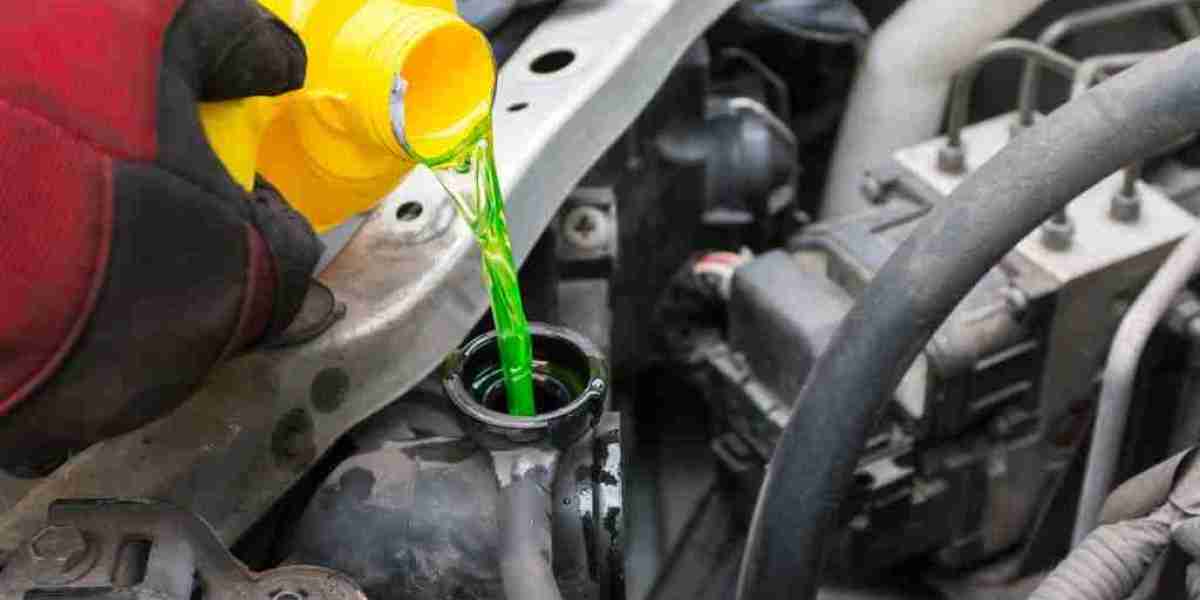Introduction
As the global automotive industry transitions toward electrification, hybrid electric vehicles (HEVs) and plug-in hybrid electric vehicles (PHEVs) are gaining traction as an essential bridge between internal combustion engine (ICE) vehicles and fully electric vehicles (EVs). This shift is creating unique opportunities in the electric vehicle coolants market, as hybrids require specialized thermal management solutions for both electric and combustion components. This article explores the growing market potential in the HEV and PHEV segments and the key factors driving demand for advanced coolant solutions.
The Role of Coolants in Hybrid and Plug-In Vehicles
HEVs and PHEVs combine electric motors with internal combustion engines, resulting in complex thermal management requirements:
Cooling of internal combustion engine components (like traditional vehicles)
Thermal regulation of battery packs, inverters, and electric motors
Temperature control of regenerative braking and charging systems
These dual systems demand multi-functional coolants that can perform across a range of operating temperatures and component types.
Market Opportunity Overview
1. Rising Hybrid and PHEV Adoption
While full EVs are growing rapidly, many consumers and governments are adopting hybrids and PHEVs as transitional technologies. According to global forecasts:
HEV and PHEV sales are expected to grow steadily through 2030, especially in regions with moderate charging infrastructure
Automakers are investing in hybrid powertrains to meet emissions regulations while addressing range anxiety and affordability concerns
This trend significantly expands the addressable market for EV-compatible coolants.
2. OEM Demand for Integrated Coolant Systems
Original Equipment Manufacturers (OEMs) are designing hybrid platforms with shared thermal systems, where a single coolant must:
Perform in high-voltage electrical environments
Maintain optimal combustion engine operation
Ensure battery safety and efficiency
Coolant manufacturers offering dual-purpose, long-life fluids are in high demand from OEMs building next-gen hybrid powertrains.
3. Extended Service Needs in Aftermarket
Hybrids often operate in stop-start traffic and experience frequent engine cycling, which stresses cooling systems. As such:
Aftermarket coolant replacement needs are increasing
PHEV users require reliable thermal management for daily EV-only driving and long-range hybrid trips
Multi-vehicle coolants compatible with both ICE and EV systems are gaining traction in independent service centers
Technological Advancements Supporting Hybrid Applications
1. Dual-System Compatibility
Innovators are creating coolants that:
Are non-conductive for electrical components
Offer high thermal stability for combustion systems
Reduce maintenance frequency through extended drain intervals
2. Hybrid-Specific Formulations
Leading chemical companies are formulating products specifically for HEV/PHEV vehicles, offering:
Corrosion protection for mixed-metal systems
Compatibility with varied thermal loads
Safe operation across wide temperature ranges
3. Smart Coolants for Condition Monitoring
As hybrid systems become more connected, coolant solutions are integrating:
Sensors and diagnostic compatibility
Predictive maintenance alerts based on fluid condition
Enhanced visibility for fleet operators and OEMs
Key Players Capitalizing on Hybrid Market Demand
Several companies are actively targeting the hybrid and plug-in segment with specialized products:
BASF SE – Offering long-life coolants for both combustion and electric components
TotalEnergies – Developing hybrid-compatible coolants under its Quartz EV line
Arteco – Launching dual-system coolants for modern hybrid platforms
Valvoline and Prestone – Expanding aftermarket solutions suitable for HEVs and PHEVs
Petronas Lubricants – Promoting Iona-branded fluids for electrified powertrains, including hybrids
These players are leveraging their R&D, OEM relationships, and global distribution networks to capture emerging hybrid demand.
Regional Outlook
Asia-Pacific: Leads hybrid vehicle production, especially in Japan and South Korea, driving significant OEM coolant demand
Europe: Growing PHEV registrations as part of carbon neutrality goals
North America: Strong hybrid market presence, particularly in the U.S., supporting both OEM and aftermarket growth
Governments offering incentives for PHEVs are creating new opportunities for coolant manufacturers in both urban and rural regions.
Challenges and Considerations
While the hybrid coolant market is growing, several challenges remain:
Fluid compatibility with varying hybrid architectures
Educating aftermarket service providers about EV-safe handling
Balancing performance and environmental compliance
Companies that overcome these hurdles will gain a first-mover advantage in a complex but rewarding segment.
Conclusion
The electric vehicle coolants market is poised for strong expansion in the hybrid and plug-in hybrid vehicle space. As these transitional technologies become more mainstream, demand for versatile, high-performance coolant solutions is rising among automakers, fleet managers, and service providers.
With continued innovation and targeted product development, coolant manufacturers have a clear opportunity to lead the thermal management revolution across all types of electrified vehicles.




